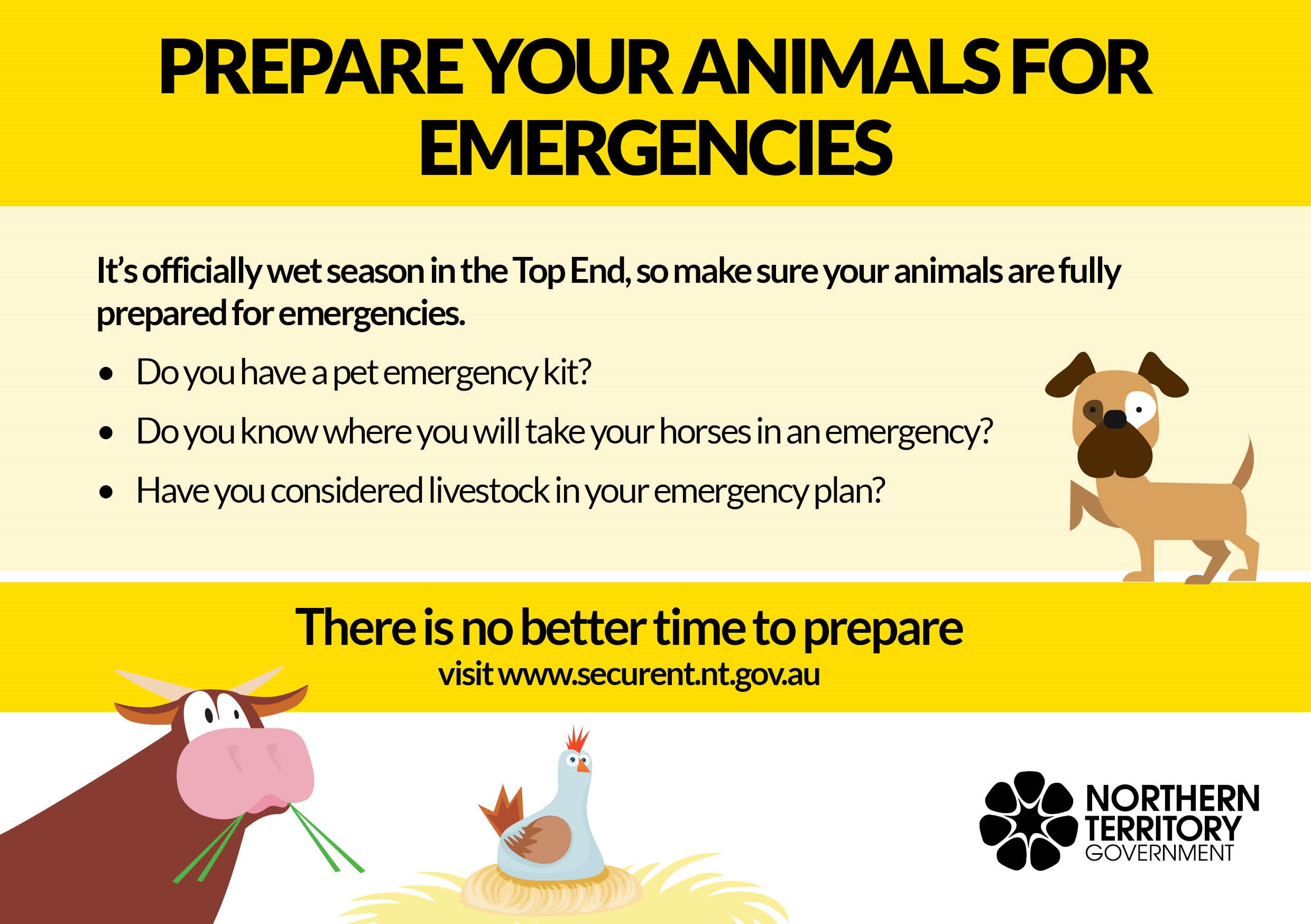Make sure your animals are cyclone ready
Pet and livestock owners are reminded to make sure their animals are prepared for emergencies this wet season. Whether you own a canine, feline, equine or anything in between – it pays to be prepared.
Pets
When planning how to take care of your pets in an emergency or disaster, you should:
- ensure your pets are microchipped, registered and have your phone number on their collar tag
- include your animals in your household emergency plan
- prepare a pet emergency kit with food, water, equipment and medications
- know in advance where to take your pet if it is unsafe for them to remain at your property
- check with your local council or other agencies about any temporary animal shelters and yards that can be used during disasters.
Horses
The safest preparation is to move your horse out of the area likely to be impacted by an emergency. A late evacuation could increase the chance of injury or death, particularly if the horse is hard to catch or difficult to load.
If you leave horses, it is preferable to leave them in a sound structure or stable with loose objects tied down. Prepare your horse emergency kit today. Include:
- food and water for a minimum of three days
- feed buckets
- blankets and towels
- extra lead rope and halter
- wire cutters
- torch, portable radio and fresh batteries
- equine first-aid items
- information about whether your horse is branded, registered or microchipped, stored in a waterproof container
- an emergency contact number for a vet stored in a zip-locked bag or waterproof container.
Livestock
The best preparation for livestock is to relocate them to a safe location as early as possible. If this is not possible, follow these precautions:
- In a flood, move animals to high ground with adequate natural feed. Additional feed may be required for stock stranded for extended periods.
- In a severe storm or a cyclone, place animals under solid cover if possible (e.g sturdy stable, shed or covered pen).
- In extreme circumstances, the best option may be to cut fences so that stock can escape danger.
Find out more, visit securent.nt.gov.au
Give feedback about this page.
Share this page:
URL copied!
